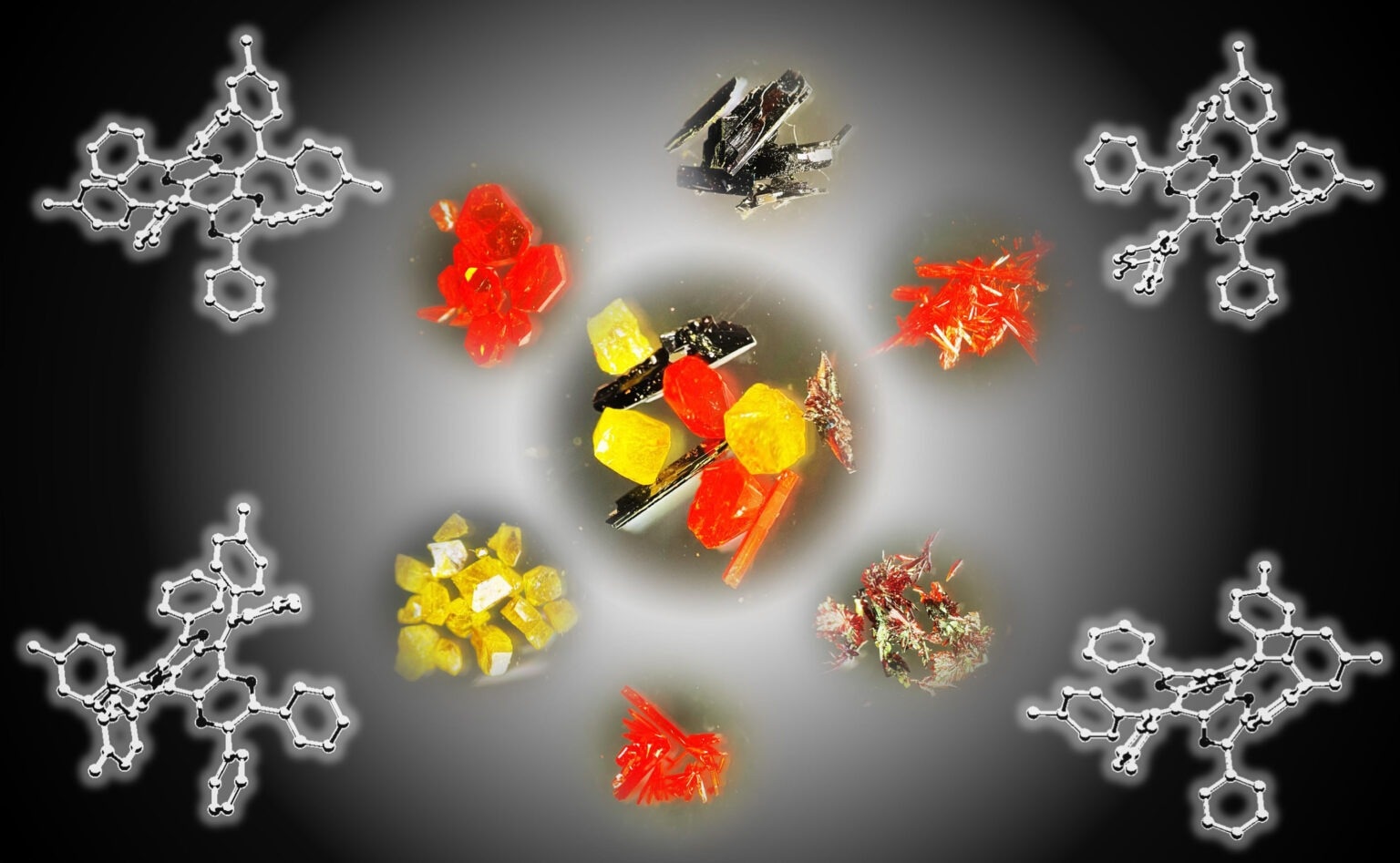Molecular switches are chemicals with molecular structures that can change between two or more stable configurations in response to environmental changes. They are of particular interest in the creation of molecular computers, molecular machines, and drug-delivery systems.

Crystals of the newly synthesized compounds, anthraquinodimethane derivatives, which have different colors depending on their molecular structure. Image Credit: Yusuke Ishigaki
Compounds with conformational isomers (same molecular formulae but distinct molecular structures) can be particularly powerful molecular switches.
Hokkaido University and Kyushu University researchers have found a method for synthesizing potential molecular switches from anthraquinodimethanes (AQDs), a group of overcrowded organic molecules.
The findings were reported in the journal Materials Chemistry Frontiers by Associate Professor Yusuke Ishigaki of Hokkaido University and Associate Professor Toshikazu Ono of Kyushu University.
AQDs are a type of overcrowded ethylene, molecules with carbon-carbon double bonds surrounded by large chemical groups. They have two common isomers, the folded and twisted forms. They are especially interesting as molecular switches, as their sterically hindered double bond can provide isomers absorbing and emitting different wavelengths of light.
Toshikazu Ono, Associate Professor, Department of Applied Chemistry, Faculty of Engineering, Kyushu University
Getting pure samples of any other isomer to investigate its attributes is challenging since AQDs often assume the most stable folded or twisted form. By creating flexible AQD derivatives that can more readily and steadily produce various isomers, the researchers were able to overcome this challenge.
When recrystallized in various solvents, the synthesized derivatives were not only able to create stable twisted and folded isomers but also additional isomeric forms. To completely understand the features of the derivatives, the researchers conducted a thorough examination.
Due to variations in the distribution of electrons inside the isomer molecules, each of these isomers absorbs and emits certain wavelengths of light when they are in a crystalline state. Interestingly, the light absorption and emission changed when the crystals were ground into amorphous solid, and following treatment with appropriate solvents allowed original or other crystals to be produced with a variety of colors.
This work is the first report on the isolation of multiple isomeric forms of AQD. Their absorption and emission of different light frequencies, and more importantly, the ability to modulate the absorption and emission by external stimuli, make these compounds excellent candidates for the development of molecular switches.
Yusuke Ishigaki, Associate Professor, Department of Chemistry, Faculty of Science, Hokkaido University
This research was funded by the Toyota Riken Scholar Program, a 2020 DIC Award in Synthetic Organic Chemistry from Japan, and the Japan Society for the Promotion of Science (JSPS) KAKENHI and Grant-in-Aid for Research Fellows (JP20H02719, JP20K21184, JP21H01912, JP21H05468, JP20J20972).
Journal Reference:
Sugawara, K., et al. (2023) Exceptionally flexible quinodimethanes with multiple conformations: polymorph-dependent color tone and emission of crystals. Materials Chemistry Frontiers. doi:10.1039/D2QM01199A.